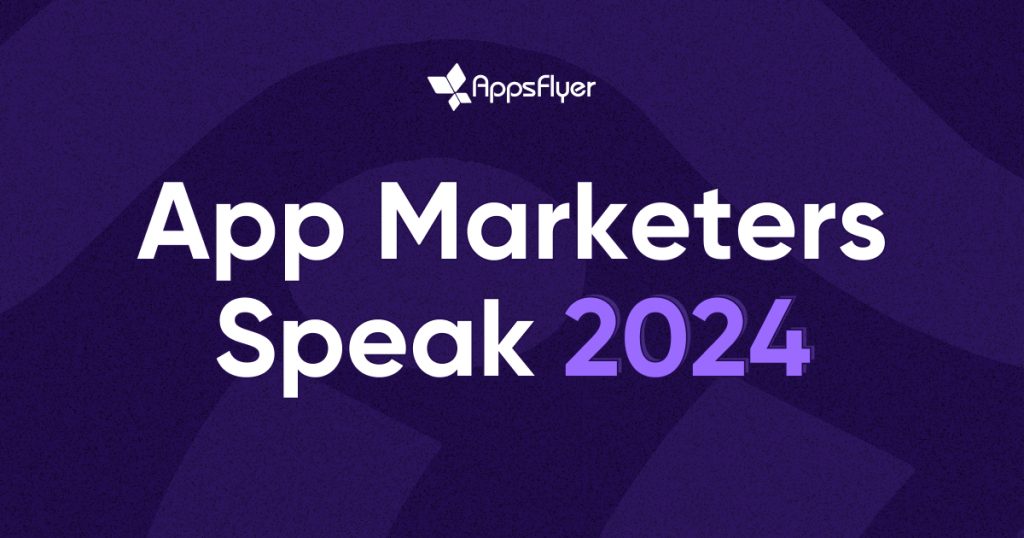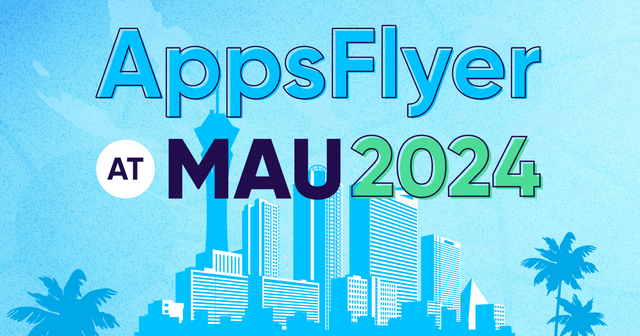
Re-engagement in the era of privacy – the definitive guide
Remember back in 2020, when you were young, naive yet acutely aware of the strategic importance of toilet paper, and could gather granular user-level data for your app remarketing campaigns? Ah, the simpler times.
True, the road to re-engagement has been looking a little bumpy since the introduction of Apple’s privacy changes to iOS 14+. Consumers’ growing concern around what they’re sharing with businesses and how that data is being used – has also peaked over the past year.
The numbers are telling a very clear story. 81% of consumers feel they’ve lost control over their own data, while only 15% of consumers think companies will use their personal data to improve their lives.
But don’t lose hope. 88% of consumers still feel comfortable sharing their data with a brand if it leads to a personalized marketing experience.
So what are the new privacy-led remarketing limitations marketers are facing nowadays, and how can they meet these challenges head on?
This guide is designed to give you the tools and know-how you need to power through this new era of privacy. Learn how to overcome the hurdles to create meaningful, long-lasting relationships with your users, solidify an effective re-engagement strategy across paid and owned channels, and minimize churn.
So flex out your adaptive muscles and put your new mindset cap on. Let’s get started!

Harnessing re-engagement in the battle against churn
It ain’t easy being a mobile marketer in 2021.
Looking at cross-vertical app usage trends, it appears that a third of all app users download an average of an app a month, but that doesn’t necessarily mean they’re actively using any.
In fact, app abandonment after a single use is on the rise, while mobile app retention is dropping steadily in the face of intensifying market competition. In many ways, retention is the basis of monetization. Engaged users are more likely to generate revenue by either making in-app purchases (IAP) or interacting with ads.
Unfortunately, retaining users is an ever intensifying monster pain point. True, it has been for a while now, but that challenge has intensified dramatically with the COVID-accelerated digitalization of our day to day, making the app space more competitive than ever.
Add to the mix the fact that almost 1 in every 2 apps are uninstalled within 30 days, and you get one tough engagement nut to crack.
This is why regaining even a small portion of these lapsed users is a major win. And this is where a smart, carefully planned and continuously tweaked remarketing strategy comes into play.
So how do you drive your mobile app re-engagement forward amidst the perpetual war on abandonment? More on the most effective strategies to win back your runaway users in the following chapters.

The (rugged) road to re-engagement
What is app re-engagement really about?
Keeping an app user continuously engaged is tough, and that’s an understatement. To understand the concept, we first need to go through the factors that influence a user’s decision to either keep using an app, use it less, or uninstall it altogether.
Studies show that users use about 24% of their installed apps, with most apps not being used more than 10 times before being uninstalled. To make things even more complex, almost 26% of the most active sessions take place up to 24-48 hours after installation, which goes down to 13% after the first week.
Leveraging app remarketing tactics is how we mitigate this problem. A successful strategy is about:
- Bringing back lapsed users
- Encouraging your current users to interact with your app more often
- Finding creative ways to engage your dormant or scarcely active users
- Minimizing churn by identifying bumps in your user journey, implementing customer feedback, and constantly improving your UX
And if you’re still not entirely convinced – here’s why a re-engagement strategy should be one of your top priorities:
Trends come and go, the market is constantly evolving, and fierce competition is driving developers to seek a competitive edge or unique added value. If your app fails to offer enough value to your users, it will simply not survive the heat of competition.
In addition to driving higher engagement and winning back lapsed users, remarketing campaigns also deal with keeping apps relevant, competitive, easier to use, and most importantly – useful.
Think about all the effort, budget and resources that go into acquiring new users — market research, app store optimization (ASO), ad creation, metrics analysis, etc. Now think about the fact that after all of that hard work, only 55% of your users will use your app more than once.
This goes to show that while acquiring new users is essential, the process of UA itself is oftentimes extremely budget-intensive and time-consuming.
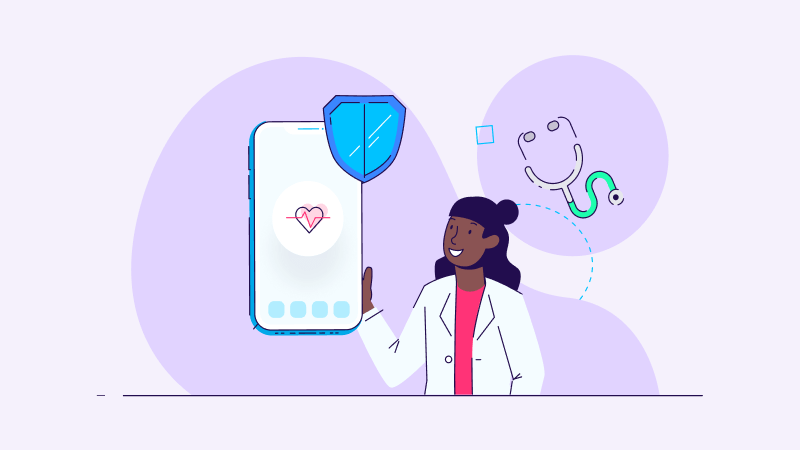
Luckily, by keeping track of installs, uninstalls, and re-downloads, while mapping out pain points in their user journey, brands are able to gain a deeper understanding of where and why they’re losing their users, as well as the best way to re-engage them.
Keep in mind that users who have engaged with your app in the past have a familiarity (and hopefully trust) with it, which might make them more likely to re-download your app a second time. That is, only if their reason for uninstalling was resolved in full. Otherwise, you’re not really going anywhere here.
The bottom line is that the numbers prove time and again that re-engagement is a proven method to combat churn, a surefire way to improve low engagement rates and boost profitability. Particularly when the cost of user acquisition is on the rise and is far more costly than remarketing.
As shown in our recent retention report, re-engagement goes a long way. When comparing apps that run re-engagement campaigns vs. apps that do not, we can see that the first group is enjoying a staggering 85% uplift in week 12 retention rates. And although these rates are primarily applicable for Android users, iOS users are catching up to the curve – as we’ll cover later on.
So now that you’re sold on the importance of investing in re-engagement strategies, what about user privacy and its direct effect on marketers’ ability to finetune and optimize their re-engagement campaigns? Glad you asked.

Re-engagement in the age of privacy
A brave new world, a brand new set of rules
Let’s talk about the latest changes to consumer privacy and their impact on remarketing.
Unless you’ve been living under a rock, you’re already well aware of the fact that Apple’s App Tracking Transparency (ATT) framework in iOS 14 has turned the world of mobile app measurement on its head.
One could claim that given Android’s undisputable global dominance in mobile devices, this new reality shouldn’t carry as much weight. However, despite the fact that iOS only commands roughly 25% of the global market share, when it comes to consumer spend in apps, its share is actually much higher thanks to a strong presence in more affluent markets.
All in all, iOS attracts tens of billions in consumer spend and marketing budgets.
Apple’s privacy-driven approach has had significant impact on the app ecosystem across attribution models, campaign optimization, monetization methods, anti-fraud technology, and of course – re-engagement.
On the one hand, measurement on iOS has fundamentally changed, introducing a string of new challenges for the industry to tackle. On the other hand, a year into this uncharted journey, we already know that new technologies, innovation, and continued adoption will enable the ecosystem to overcome these hurdles.
So keep in mind that despite a new set of challenges, we’re still very much in the transition phase. Measurability and performance will eventually be retained once all the necessary tools and capabilities are in place.
Stranger things | The new privacy-driven challenges we’re all dealing with

With the recent changes to user privacy, mobile app marketers have had to rethink how to measure, attribute, and optimize their campaigns. But what are these challenges exactly?
First and foremost — limited data for targeting and optimization, and the need to rely on aggregated data instead of user level data. This also means having to change much of the user level data-centered technologies we’ve all gotten used to.
Above all, these changes are pushing advertisers to make a much needed mindshift from the old way of planning, measuring, and optimizing their campaigns – to adopting a new framework.
Is re-engagement even possible in an IDFA-limited reality?
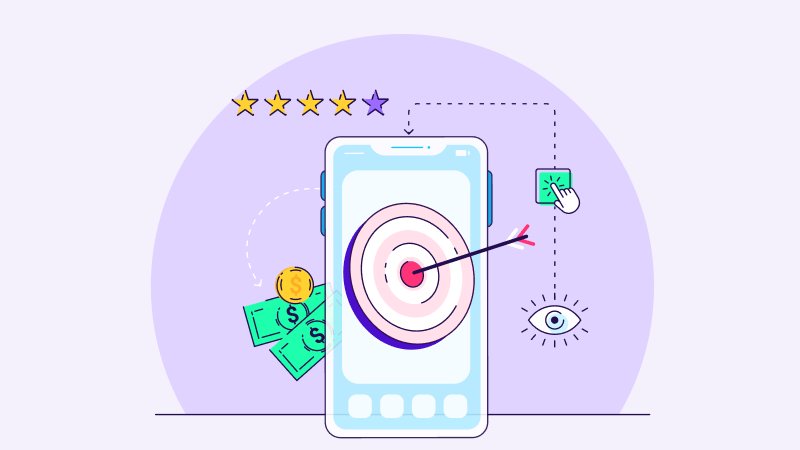
Before we dive in, remember – Android re-engagement remains unchanged. So while Apple is reinventing the wheel, don’t overlook tried-and-true methods of remarketing. If Android is your primary bread and butter, it’s mostly business as usual for you. But keep reading, and take the benefits of contextual remarketing into consideration.
Re-engagement used to rely on IDFA for serving personalized ads to either lapsed, dormant or prone-to-abandon-ship users.
Apple’s iOS 14.5 update, however, introduced two new changes to IDFA sharing:
- Apple’s ATT requires that apps ask users for their permission to share their IDFA as part of an opt-in mechanism.
- Apple’s SKAdNetwork (SKAN) became the primary attribution framework for iOS 14.5+ devices, and does not pass user level information.
Does this mean IDFA is no more? No. It just means that IDFA is harder to get, and that the pool of existing users you can re-engage has gotten smaller (despite making somewhat of a comeback as we’ve seen in the data above).
GBRAID – optimizing re-engagement for IDFA-less conversions
And now – let’s discuss some braids. But first, a little bit of background.
In the face of the new IDFA-limited era, self-reporting networks (SRNs) such as Google began offering innovative, privacy-compliant solutions for measurement and attribution.
Not too long ago, Google’s click IDs – known as GCLIDs – used to power Google Ad smart bidding campaigns when they were captured and uploaded back to Google.
However, as most marketers have already noticed, GCLIDs recently started “disappearing” or being replaced by GBRAIDs (or WBRAIDs in certain instances). Why is that?
It all comes down to changes Google has made back in March 2021 in the wake of Apple’s renowned iOS 14.5 update. A new parameter sent only for iOS remarketing campaigns – called GBRAID – has been introduced.
In essence, GBRAID is an aggregate identifier compliant with iOS 14, meant to optimize remarketing campaigns.
More specifically, if a click is coming from an iOS device by a user who has opted out of tracking, you can expect to see either a GBRAID or a WBRAID value. If your Google Ad click is coming from a non-iOS device, however, it’s going to be a good old business-as-usual GCLID.
In case you were wondering, Google is certainly not alone in their attempt to establish an alternative to the now challenged re-engagement landscape. Facebook and Snapchat are also developing their own creative responses to recent changes. So definitely stay tuned, it’s going to be an interesting ride.

Where do we go from here?
So what steps CAN you take to ensure a successful re-engagement strategy and achieve more meaningful interactions with your users?
Rethink your mobile marketing strategy
Diversify your channels
This is the perfect time to embrace a cross-channel approach. A recent research by Braze found that brands who take a cross-channel approach that blends both in-product and out-of-product messaging channels – tend to have the highest overall performance:

What exactly do we mean when we say “diversification of channels”? Let’s break it down:
1. Paid media
The most common types of paid media you can harness in your battle against churn are video ads, banner ads, search ads, native ads on social media, whether in an in-app or web environment.
Be sure to adjust your creatives and content to the channel you’re utilizing, and keep tweaking your ads to ensure appeal and relevancy (e.g. seasonality).
2. Owned media

Owned media is under your complete control – from creation to distribution – and is a potent way to reconnect with both your existing and ex-customers.
From blog posts to SMS, push notifications, and email campaigns and from webinars to tweets, owned media is your way of creating free, contextual content designed to increase engagement on your active, idle or lapsed users’ side.
A sub-category that nestles under owned media but not under your direct brand properties are 3rd party profiles, which include app store profiles, review site listings, and forums. Leveraging these platforms to serve relevant and value-packed content is a great way to re-engage your MIA users.
There are plenty of benefits for leveraging owned media for the purpose of driving effective re-engagement. To name a few:
- Full control over every aspect of your content.
- It’s free – aside from the internal resources you’ve put in to create it.
- Low risk – with paid media you could find you’ve wasted your budget if a campaign proves to be unsuccessful, and with earned media (the equivalent to digital word of mouth) you lack control over comments or potential inaccuracies. Owned media avoids both completely.
- Contextuality – owned media allows you to build content strategy that addresses each stage of your user journey, including your uninstallers or dormant users.
The first group could be encouraged to re-install your app using an irresistible email offering, while the latter could respond well to a creative push notification that reminds them of your app’s awesomeness.
3. Earned media
Earned media is some of the most sought after – and hardest to get – exposure, because of its perceived credibility and potential reach. While you might not have the same level of message control as with owned media, the potential resonance and amount of trust placed in these types of recommendations – is undeniable.
Earned media can include social sharing by individual contributors, reviews by bloggers or influencers, or an independent article written about your product or service.
Although earned media doesn’t come by easily, baking earned media appeal into your remarketing content – could go a long way.
4. Hot fusion | Solidifying an owned, earned and paid media combo
Not too long ago, these media channels were deeply siloed. Now, they flow into one another, with users effortlessly switching between devices and platforms.
This new reality blurs the lines between paid and owned channels, pushing brands to adapt a new, more holistic type of messaging. When done right, it can lead to a rise in brand awareness, higher engagement, and a much coveted drop in churn.
In a perfect world, your owned and paid media immediately create a whirlwind of earned media, reeling back your long lost users like hummingbirds to a sweet nectar.
In reality, however, you might want to focus on your owned media to get more interaction with your audience. If it’s top-quality content that offers genuine value your users can’t find somewhere else, then a more self-sustaining earned media wave is more likely to follow.
This way you can get scale and trust – without having to resort to overly inflated budgets.
5. Web-to-App
This frictionless approach is about encouraging your web visitors to either reinstall or rediscover your app, through a combination of smart banners and deep linking scripts that dynamically generate links behind banners, web copy, CTAs, and badges.
Let your high-intent ex-app web users know your wonderful app is only a click away, and offer them some sort of an incentive to take the next step.
The 1st party data fortresses
Newly forged content fortresses are appearing to be an inevitable byproduct of Apple’s ATT privacy policy.
In its essence, privacy goes against 3rd party sharing. But within a company or a group of companies that nestle under the same legal entity, 1st party data is not only allowed but is the very core of key marketing activities. Remarketing within a 1st party environment is taking front and center, and the bigger this environment – the more you can optimize.
In other words, when giant companies acquire smaller studios, they also gain uninterrupted access to an expanded user base and the 1st party data that comes with it. This enables the mega studios to execute precise cross-promotion across a growing portfolio of apps and audiences, without being confined to the limitations of Apple’s ATT framework.
In many ways, the rapidly progressing M&A trend and market shift towards content fortresses enable the companies involved a degree of 1st party content synergy and steady cross-platform advertisement – that would not be attainable otherwise.
It IS personal – Enhancing your re-engagement tactics

Tweaking the ATT messaging
Based on early adopters’ first hand experience, here are a few easily-implemented steps for optimizing your opt-in rates:
- Timing – Finding the precise moment in the user journey to prompt the user with the ATT dialogue is a key factor to consider. 88% of consumers say the extent of their willingness to share personal information is based on how much they trust a company.
So, find ways to establish trust before hurling the ATT at your users. A couple of ways would be to better present the value of your product, or ensure full alignment between your ads and actual offering.
This will increase the chances of opting-in compared to showing the prompt right after the first app launch.
- Customized purpose string – The unbolded text in the ATT dialogue box can be edited, so you can better explain why you want to capture the user’s IDFA.
Going back to the statistics, keep in mind that transparency around how you’re going to use your users’ data and to what purpose – will serve you well in winning their hard-earned trust.
It’s a minor effort which could have a substantial impact on your opt-in rates, the ability to accurately measure, and effectively re-engage your audience.
- Pre-ATT prompt – Displaying a “pre-ATT prompt”, or gating the ATT dialogue behind your own native prompt, will allow you to entirely customize the design, timing, and messaging to best fit your app, and ultimately show users what’s in it for them.
Audience segmentation
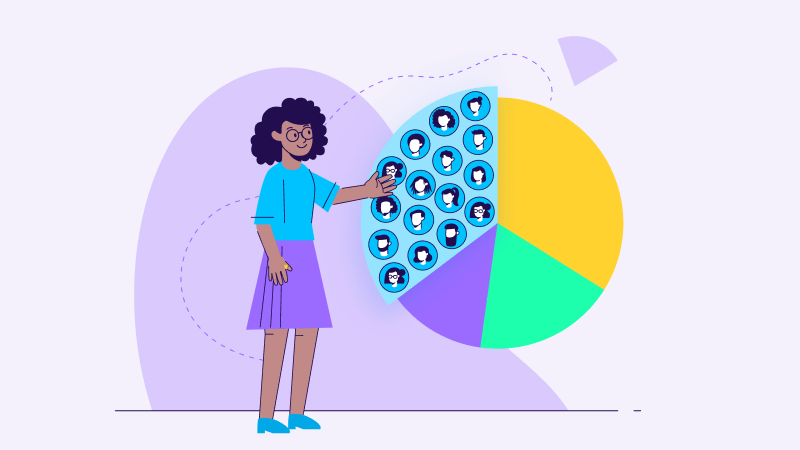
Within their 1st party content empire, post M&A brands are using integrated audience segmentation and marketing automation tools to mitigate cross-promotion complexity.
How can smart audience segmentation help brands drive growth in an IDFA-limited world?
- Cross-promotion – advertising app X to users from app Y based on their known preferences.
- Maximizing owned channels in a holistic way – allowing you to create tailored messaging based on in-app messages, push notifications, email, and SMS.
- Optimizing reach – excluding users who have already responded to a campaign from seeing similar ads across other owned channels.
- Boosting retention – reaching out to users who are showing signs of imminent churn, like a drop in usage.
- Improving measurement – connecting user segments to campaign level performance, strengthening your ability to keep a finger on the pulse of your most mission critical trends.
Incrementality – the golden standard for re-engagement measurement
Incrementality gives you the necessary insights to determine the real value of your remarketing efforts. This is done by measuring which conversions were the result of a specific campaign, and which would have happened organically on their own.
Bear in mind that proper incrementality testing could be a long and complicated process, prone to poor execution and interpretation. It requires knowledge, expertise, and a robust testing environment to ensure that the right insights are derived and the right decisions are driven.
One of the quality signs you should be looking for in an incrementality solution is the ability to offer a full integration between measurement and segmented audiences. This will allow you to streamline the whole process of creating and managing your test campaigns, and free you to focus on the end-goal of your tests without having to worry about the heavy lifting that comes with it.

Innovation to the rescue! Making privacy-flavored lemonade
In light of everything we’ve mentioned above, a paradigm shift towards privacy-centric measurement is a must. Rather than looking for workarounds, a fundamental change in perception is in order — the future is private, and so is remarketing measurement.
The following are the core pillars of measurement that, when combined, will empower marketers to drive performance without compromising on consumer privacy:
- Extrapolations from a proxy set of users – allowing marketers to rely on an intermediary cohort for whom more granular data is available. For example, using 1st party data from owned media, while applying learnings and performance benchmarks across the user base.
- Predictive analytics – enabling marketers to make data-driven decisions with a high level of confidence, while relying on very limited data points.
Although predictions can serve all aspects of data-driven marketing, in the iOS 14+ reality they are made critical, now more than ever. They allow you to predict LTV based on limited data — often as little as signals from the first 24 hours. Knowing their users’ LTV, marketers can better allocate their acquisition spend.
Understanding typical user behavior and the early milestones that separate users with high potential from users with low potential — can be extremely useful for executing targeted and effective re-engagement.
- Top-down measurement – this is the time to adopt holistic measurement methodologies such as incrementality and media mix modeling (MMM), which allows marketers to measure the impact of their campaigns, and determine how various elements contribute to their bottom line.
- Data science and machine learning – the entire ecosystem is investing heavily in the fields of predictive analytics and top-down measurement. Marketers should follow suit and develop these capabilities by employing an in-house data science team.
Although this extra step is not likely to address immediate pains, it will enable you to get more applicable data for internal predictions — a must-have in the age of privacy.
5 ways to juice up your re-engagement strategy
We’ve covered the most innovative technologies and methodologies to help you polish your remarketing capabilities. But now that you’ve got the “what”, what about the “how”?
Let’s have an overview of the top 5 simple tactics that will help you maximize your reach and engagement rates:
1. It’s never just about quantity – Segmentation done right
Getting more downloads is never the end goal. You don’t need more users who will end up going MIA after downloading your app. You need the right users.
The first step to nailing quality vs. quantity remarketing strategy – is understanding why your users are dropping off to begin with:
Is it poor or broken UX? Are your ads overselling your app’s value? Are there any constant bugs or recurring performance issues? Are your users being bombarded by too many in-app notifications? Always get your ex-users feedback in an effort to determine what doesn’t work and what needs to be improved.
The second step to planning and executing an effective re-engagement strategy – is chucking “send all” marketing out of the window, and investing in segmented, personalized and contextual remarketing.
Leveraging audience segmentation to drill down your user base according to demographics, LTV, and past app usage, will allow you to personalize your emails and push notifications to what would hopefully become your loyal, high LTV audience.
2. Let’s get social
Sometimes the best way to spark re-engagement is to simply remind your users that your app exists via social media. Make sure you have a strong presence on LinkedIn, Facebook, Instagram, and Twitter and post to each one consistently.
By creating engaging social content, whether paid or owned, you’ll be able to stay top of mind with your users and re-engage them much easier when a new feature or important update is released.
True, social media ads can be expensive, but when done right – they also show great ROI. Try running ads for your best value propositions and deep link them to the relevant points in your app.
3. Perfecting push notifications
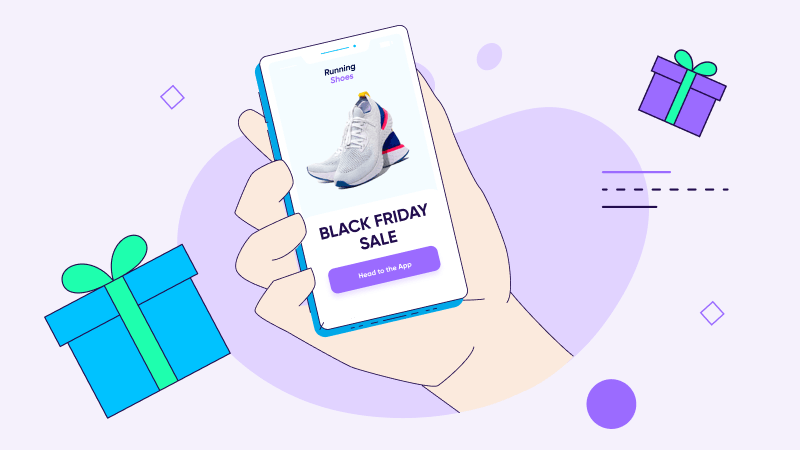
Always ask yourself what kind of reaction your re-engagement content generates for your users. Are you sparking curiosity? Giving your users a taste for more?
When composing push notifications, make sure you don’t overdo it. Resist the urge to include irrelevant information or the use of multiple opt-in notifications.
Engagement rates will vary depending on your industry, although 40% engagement from a well-targeted and timely push notification isn’t unheard of.
So take your time in studying your users, understanding first-timers from dormant users, and perfecting the right timing and approaches for re-engaging your inactive users.
4. Crafting killer emails
Email marketing is another great way to market your app to dormant users and entice them to re-engage.
But simply sending your users a random message won’t do the trick. You have to be strategic, send your emails at relevant times, and personalize your communications as much as possible – if you’re to stand a chance at standing out from the ocean called your users’ inbox.
5. Identify gaps in your customer journey
Study which events tend to be associated with a disengaged or highly engaged user as closely as possible. Does negative feedback often come before disengagement? Are certain areas of the app difficult to navigate, bringing users to struggle to do what they came here to do?
Once particularly sensitive events have been logged, you can use triggers in the form of SMS, in-app messages, push notifications, emails, or social messages that will pull users back into the app with rewards, celebrations of their achievements or special offers.
Continuously testing and optimizing your campaigns is an integral part of a re-engagement strategy. For gaming apps, for example, you’ll want to target players who have unlocked an achievement or reached a certain level within a certain period of time but then stopped playing.
Once you have these segments, you can A/B test creatives to find the right combination of messages, CTAs, and video content.

- There’s a dramatic shift happening in the world of mobile right now and it’s centered around user privacy. Today, digital marketers have to think about their consumer’s privacy first before they plan and execute their remarketing programs.
- Savvy marketers put their faith in data, measurement, and ongoing optimization to ensure their paid activities are profitable. However, privacy-driven policies such as Apple’s ATT are introducing new challenges to an increasingly regulated space.
- In today’s privacy-centric reality, the main challenges in driving re-engagement campaigns are limited data for targeting, and the need to rely on aggregated instead of user level data. Implementing features such as incrementality measurement, predictive analytics, and cohort analysis – will help you plan, execute, and optimize your remarketing strategy.
- The recent surge in Gaming M&A enables the giant studios to gain uninterrupted access to the massive pool of 1st party data that comes with it.
By building their own “1st party data fortresses”, these mega brands are able to execute precise cross-promotion across a growing portfolio of apps – thanks to marketing automation tools such as audience segmentation – without being confined to the limitations of Apple’s ATT framework.
- It’s important to keep in mind that the mobile app space is still very much in a transition phase. With only several months under our belt since the release of iOS 14.5, we already know that new technologies, a focus on innovation, and continued adoption will enable the ecosystem to overcome these hurdles.


